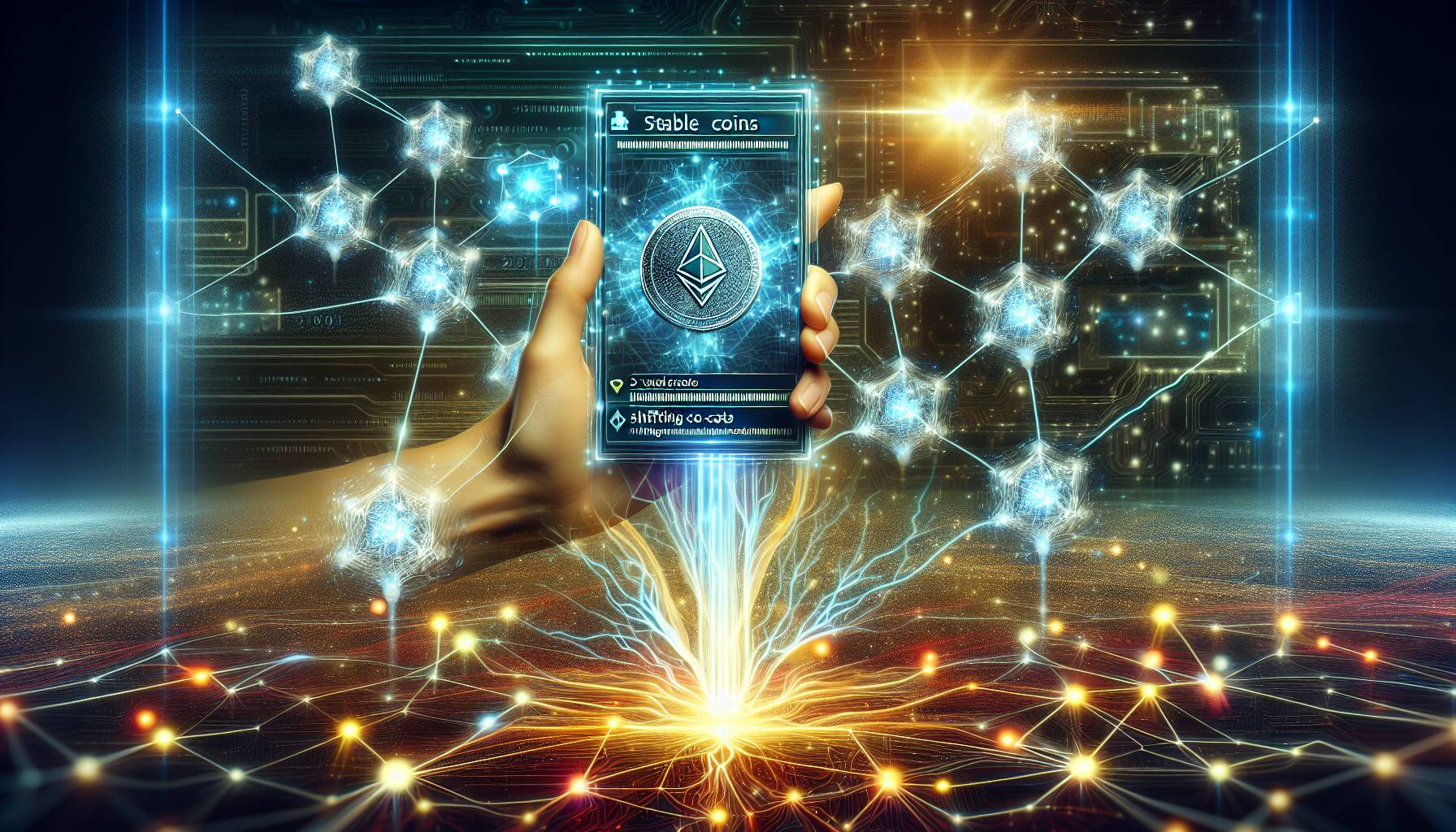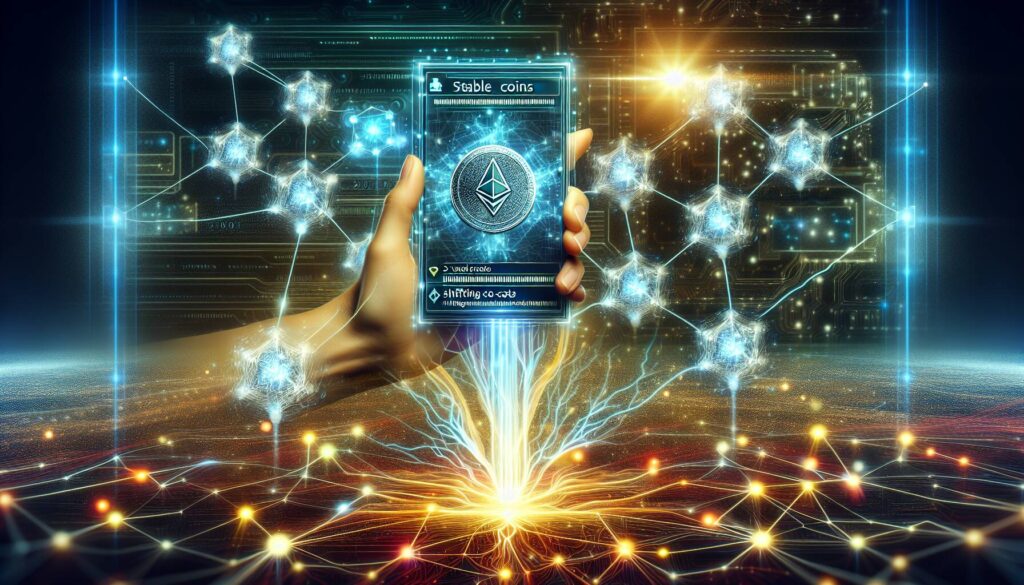The cryptocurrency landscape is buzzing with excitement as the start-up Plasma unveils its innovative blockchain designed specifically for stablecoins. This new project promises to revolutionize the way we think about global money transfers, boasting features that focus on speed, efficiency, and interoperability. Utilizing a consensus mechanism inspired by HotStuff, Plasma aims to facilitate quick and reliable transactions even amidst challenges posed by potentially faulty network nodes.
In essence, the HotStuff consensus mechanism allows for agile decision-making, akin to a group of friends coordinating a picnic. Even if a few members of the group are untrustworthy, as long as the majority agrees, plans can proceed without hassle. This structure enhances efficiency by enabling single-step confirmations, effectively reducing the delays often associated with traditional methods of reaching consensus on blockchain networks.
Plasma has been built with the world-renowned stablecoin Tether in mind, which currently dominates the stablecoin market with over 60% of market share. Notably, Tether is positioned as a major player, boasting a market cap of 4 billion and impressive profits last year. With early investors including notable names like Peter Thiel and Tether’s own CEO, Paolo Ardoino, Plasma is poised to make a significant impact in the industry.
This blockchain operates as a sidechain to Bitcoin while fully supporting the Ethereum Virtual Machines (EVM), positioning Plasma to take advantage of the robust activity on various smart contract platforms. Its unique execution layer utilizes Rust Ethereum, or Reth, which ensures compatibility with existing Ethereum applications while also incorporating a bridge to Bitcoin for seamless transactions between the two networks.
“By periodically anchoring state diffs on Bitcoin, Plasma achieves seamless interoperability and uses Bitcoin as a settlement layer—delivering permissionless finality, stronger censorship resistance, and a universally verifiable source of truth,”
said Plasma in a recent announcement. With features like zero-fee USDT transfers and the ability to pay transaction fees in various tokens, Plasma aims to enhance user experience and compliance in the ever-evolving world of digital finance. As the stablecoin sector continues to grow, Plasma’s cutting-edge approach could redefine how global transactions are conducted, potentially influencing the entire crypto market.

Key Features of Plasma’s Stablecoin Blockchain
Plasma’s new stablecoin blockchain introduces various technical features aimed at enhancing the efficiency and security of global stablecoin transfers. Here are the most important aspects to consider:
- Fast and Efficient Transfers:
- The HotStuff-inspired consensus mechanism allows for rapid confirmation of transactions, which is vital for stablecoin operations.
- This efficiency can have a significant impact on users, enabling quicker and more reliable transactions in a global context.
- Byzantine Fault Tolerance (BFT):
- The consensus mechanism can maintain functionality even with faulty or malicious nodes, ensuring more reliable network performance.
- This feature minimizes disruptions and enhances users’ trust in transaction security.
- Seamless Leader Replacement:
- Allows for efficient decisions without unnecessary delays if a leader node behaves erratically.
- This contributes to a smoother experience for users, ensuring that transactions aren’t held up by singular points of failure.
- Optimized for Tether (USDT):
- Plasma is purpose-built for Tether, which dominates the stablecoin market with a capitalization of 4 billion.
- This integration means higher liquidity and easier access for users and businesses dealing with Tether.
- Compatibility with Ethereum and Bitcoin:
- Plasma is designed as a Bitcoin sidechain with full compatibility with Ethereum Virtual Machines (EVM), enhancing interoperability.
- This is beneficial for users engaged in cross-chain activities, providing more options and operational flexibility.
- Custom Gas Tokens and Transaction Features:
- Users can pay fees in USDT or BTC and enjoy zero-charge USDT transfers, improving cost-efficiency.
- Confidential transactions ensure privacy, which is increasingly valuable in today’s digital economy.
- Interoperability with Bitcoin:
- By regularly linking to Bitcoin blockchain updates, Plasma offers stronger security and a universally recognized source of truth.
- This feature appeals to users seeking robustness in their cryptocurrency transactions, particularly those relying on Bitcoin’s security properties.
Understanding these features can impact readers who are interested in utilizing stablecoins, as it shows how Plasma’s innovations might provide superior transaction experiences and security assurances in the rapidly evolving cryptocurrency landscape.
Analyzing Plasma’s Stablecoin Innovations in the Blockchain Ecosystem
Plasma’s recent unveiling of its cutting-edge blockchain platform tailored for stablecoin transactions represents a significant leap in the digital currency space, particularly with its implementation of a HotStuff-inspired consensus mechanism. This move aligns with current trends in the industry, where speed, efficiency, and security are paramount. One of the standout features of Plasma is its ability to support rapid finality and low latency, which are crucial for facilitating high-frequency global stablecoin transfers. This positions Plasma favorably against traditional blockchain networks like Ethereum, which have struggled with congestion and transaction delays.
In comparing Plasma’s offerings with others in the market, we can see both competitive advantages and disadvantages emerge. For instance, while established players like Ethereum, Tron, and Solana offer robust infrastructures for smart contracts, they often fall short in terms of transaction speed and scalability. Plasma’s design as a Bitcoin sidechain aims to leverage Bitcoin’s security while maintaining compatibility with the Ethereum Virtual Machine (EVM), creating a unique competitive edge. This dual functionality can attract developers and enterprises looking for versatility combined with reliability.
However, the project’s ambitious nature could also lead to challenges. The reliance on a Byzantine Fault Tolerance (BFT) mechanism may introduce complexity, necessitating a deeper understanding from potential users and developers. Furthermore, while the backing from notable industry figures like Peter Thiel and Paolo Ardoino lends credibility, it could also spark skepticism among traditionalists who may not fully embrace Plasma’s approach, particularly in how it integrates with existing systems.
This innovation could greatly benefit institutional investors and developers seeking faster and more secure stablecoin solutions. By providing features such as zero-charge USDT transfers and custom gas tokens, Plasma directly addresses the need for cost-effective transactions, which is appealing for frequent traders and businesses that rely on stablecoin liquidity. On the flip side, it may pose challenges for competitors who are currently entrenched in the market, as Plasma’s efficiency could siphon off users who prioritize speed and security. Established stablecoin issuers might feel pressured to innovate or improve their offerings to remain relevant in light of Plasma’s advancements.
In conclusion, while Plasma’s unique features position it strongly in the race for stablecoin supremacy, its success will largely depend on user acceptance and the ability to successfully navigate the competitive landscape, which includes both traditional blockchain users and emerging fintech challengers. As the crypto ecosystem continues to evolve, Plasma’s ability to stay agile and responsive to the market’s needs will be pivotal in cementing its place within this dynamic space.

















